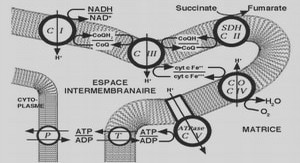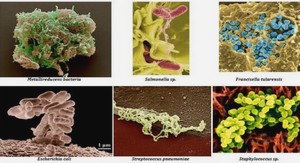Utilisation de Weissella comme starters
Les espèces du genre Weissella, plus précisément W. cibaria, W. confusa, W. paramesenteroides, W. koreensis et W. hellenica, malgré le fait qu’elles soient retrouvées dans plusieurs types d’aliments fermentés, restent encore très peu étudiées et ne sont pas utilisées en tant que starters commerciaux, contrairement aux espèces Lb. plantarum, Lb. delbrueckii, Lc. mesenteroides, L. lactis, Sc. thermophilus ou Pc. acidilactici, entre autres. La caractérisation de ces espèces est l’un des objectifs de ce projet de thèse. Ce chapitre apporte une synthèse bibliographique du genre Weissella, des caractéristiques connues et des études des espèces de ce genre. Il est présenté sous la forme d’une revue publiée dans le journal Fermentation, intitulée Why are Weissella spp. not used as commercial starter cultures for food fermentation?
Why Are Weissella spp. Not Used as Commercial Starter Cultures for Food Fermentation?
Amandine Fessard and Fabienne Remize * ID UMR C-95 QualiSud, Université de La Réunion, CIRAD, Université Montpellier, Montpellier SupAgro, Université d’Avignon et des Pays de Vaucluse, F-97490 Sainte Clotilde, France; amandine.fessard@univ-reunion.fr * Correspondence: fabienne.remize@univ-reunion.fr; Tel.: +26-269-220-0785 Received: 25 June 2017; Accepted: 14 July 2017; Published: 3 August 2017 Abstract: Among other fermentation processes, lactic acid fermentation is a valuable process which enhances the safety, nutritional and sensory properties of food. The use of starters is recommended compared to spontaneous fermentation, from a safety point of view but also to ensure a better control of product functional and sensory properties. Starters are used for dairy products, sourdough, wine, meat, sauerkraut and homemade foods and beverages from dairy or vegetal origin. Among lactic acid bacteria, Lactobacillus, Lactococcus, Leuconostoc, Streptococcus and Pediococcus are the majors genera used as starters whereas Weissella is not. Weissella spp. are frequently isolated from spontaneous fermented foods and participate to the characteristics of the fermented product. They possess a large set of functional and technological properties, which can enhance safety, nutritional and sensory characteristics of food. Particularly, Weissella cibaria and Weissella confusa have been described as high producers of exo-polysaccharides, which exhibit texturizing properties. Numerous bacteriocins have been purified from Weissella hellenica strains and may be used as bio-preservative. Some Weissella strains are able to decarboxylate polymeric phenolic compounds resulting in a better bioavailability. Other Weissella strains showed resistance to low pH and bile salts and were isolated from healthy human feces, suggesting their potential as probiotics. Despite all these features, the use of Weissella spp. as commercial starters remained non-investigated. Potential biogenic amine production, antibiotic resistance pattern or infection hazard partly explains this neglecting. Besides, Weissella spp. are not recognized as GRAS (Generally Recognized As Safe). However, Weissella spp. are potential powerful starters for food fermentation as well as Lactococcus, Leuconostoc or Lactobacillus species.
Weissella Genus
Phenotypic and Genetic
Characteristics of Weissella spp. Weissella genus belongs to the Leuconostocaceae family together with the genera Leuconostoc, Oenococcus and Fructobacillus [15]. Weissella genus was proposed in 1993 from previously Leuconostoc and Lactobacillus classified species. Weissella spp. are gram-positive, catalase negative, asporogenous, non-motile, except for W. beninensis, and lack cytochrome [16]. Cells are either short rods or ovoid and occur in pair or in short chains. They are facultative anaerobic with an obligatory fermentative metabolism. Weissella spp. are hetero-fermentative: glucose is fermented via the hexose-monophosphate and phosphoketolase pathways. End products are lactic acid, CO2, ethanol and acetic acid, except for Weissella ceti which does not produce gas [17]. Configuration of lactic acid can be either D(-) or DL. Hydrolysis of arginine depends on the species whereas all Leuconostoc spp. are arginine-negative. Cell-wall peptidoglycan is composed of lysine and the interpeptide bridge contains alanine or serine, except for Weissella kandleri which contains glycine. Growth mainly occurs between 15 ◦C and 37 ◦C, but some strains of Weissella cibaria and Weissella confusa are able to grow at 45 ◦C. The type species is Weissella viridescens. Fusco et al. [18] have drawn a complete description of Weissella spp., except for Weissella bombi and Weissella jogaejeotgali which have been described afterwards. Distinction between Weissella, Leuconostoc and heterofermentative lactobacilli remains impossible based only on morphological observation. Since they produce gas from carbohydrates, members of the genus Weissella may be distinguished from homofermentative lactobacilli, enterococci, pediococci, lactococci and streptococci. Generally, identification of Weissella spp. is performed with molecular methods, such as 16S rRNA gene sequencing, amplified ribosomal DNA restriction analysis (ARDRA), ribotyping, Matrix-associated laser desorption ionization Time-of-Flight (Maldi-ToF), repetitive element-PCR fingerprinting using (GTG)5-PCR or fluorescent-Amplified Fragment Length Polymorphism (fAFLP) [18]. The genome sequence of 28 strains belonging to 12 species has been published (GenBank). The smallest genomes belong to Weissella halotolerans (1.36 Mb) and W. ceti (1.35 to 1.39 Mb), which share the same taxonomic branch. The largest genomes belong to W. cibaria (2.32 to 2.47 Mb), W. confusa (2.18 to 2.28 Mb), W. jogaejeotgali (2.11 Mb) and Weissella oryzae (2.13 Mb), all these four species having been isolated from fermented foods. The core-proteome of Weissella represented 729 COGs (Clusters of Orthologous Genes), over a pan-proteome of 4712 COGs. Core-proteome is essentially involved in housekeeping but shows a relative lack of shared traits between all species, which might explain the diversity of niches of the species.
Taxonomical Position and Specific Traits
Collins et al. demonstrated that Lactobacillus confusus, Lactobacillus kandleri, Lactobacillus minor, Lactobacillus viridescens and Lactobacillus halotolerans were phylogenetically related to Leuconoctoc paramesenteroides. Besides, a unique murein type, Lys-Ser/Ala, was reported within Lb. viridescens, Lb. minor and Lb. halotolerans, which was identical to that found in the Lc. paramesenteroides group [20]. Hence, from this group, the genus Weissella was created and species were named Weissella paramesenteroides, W. confusa, W. kandleri, Weissella minor, W. viridescens, W. halotolerans plus Weissella hellenica, isolated from fermented sausages [19]. Based on 16S and 23S rRNA sequence analyses, three evolutionary lines were distinguished in Leuconostoc spp., nowadays named Leuconostoc sensu strico, W. paramesenteroides and Oenococcus oeni [21]. The genera Oenococcus and Fructobacillus have been proposed from re-classified Leuconostoc spp. [22,23], but interestingly, Weissella was the only genus of the Leuconostocacea family gathering re-classified Leuconostoc and Lactobacillus spp. Currently, the genus Weissella comprises 21 species, isolated from a high variety of sources (Table 1). Based on partial 16S rRNA coding sequence, several branches can be separated within Weissella spp. (Figure 1 and Table 1). Weissella ghanensis, Weissella fabaria, Weissella fabalis, all isolated from fermented cassava, and W. beninensis belong to the same branch. W. ceti, W. halotolerans, W. minor, Weissella uvarum and W. viridescens share another taxonomic branch, which mainly originates from previous Lactobacillus spp. [20]. Species of this branch harbor diverse habitats. W. viridescens and W. halotolerans have been isolated from meat products [20,24], W. minor from milking machine sludge [20], W. ceti from a beaked whale [17] and W. uvarum from wine grapes [25]. Weissella diestrammenae, W. kandleri and Weissella koreensis constitute a third branch with strains from different sources. W. kandleri and W. koreensis were isolated from Koumiss, a fermented drink from mare milk, and from kimchi, respectively. W. cibaria and W. confusa belong to the same branch and share numerous habitats. Both species have been found in fermented foods, animal, clinical samples and human feces. These two species are hardly distinguishable since they share 99.6% of identity in their 16S rRNA coding sequence. Another branch comprises W. bombi, W. hellenica, W. jogaejeotgali, W. paramesenteroides and Weissella thailandensis. All the species from this branch have been isolated from fermented foods except W. bombi isolated from insect gut. Interestingly, W. jogaejeotgali and W. thailandensis are closely related and both have been detected in Jeotgal, a fermented seafood product. W. paramesenteroides and W. hellenica were detected in fermented sausages, fermented milk or cheese.




